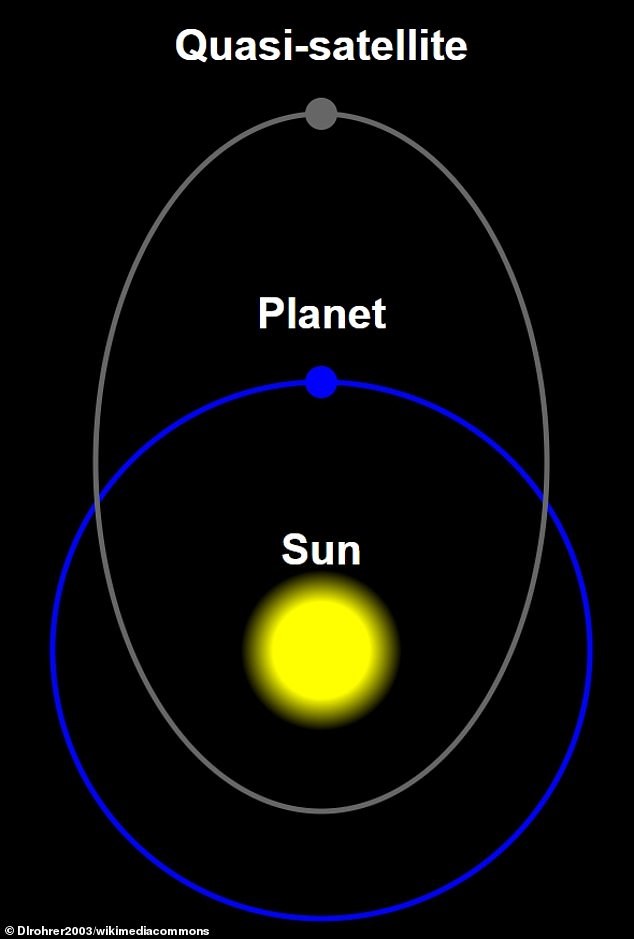Description

Disclaimer: Copyright infringement not intended.
Context
- The newfound asteroid2023 FW13 circles the sun in sync with Earth, making it our planet's "quasi-moon."
- The asteroid was first spotted on March 28 by scientists using the Pan-STARRS survey telescope.
Details
- Dubbed 2023 FW13, the space rock is considered a "quasi-moon" or "quasi-satellite.
- It is estimated to be 50 feet (15 meters) in diameter.
- During its orbit of the sun, 2023 FW13 also circles Earth, coming within 9 million miles (14 million kilometers) of our planet.
- For comparison, the moon has a diameter of 2,159 miles (3,474 km) and comes within 226,000 miles (364,000 km) of Earth at the closest point of its orbit.
- 2023 FW13 has been Earth's cosmic neighbour since at least 100 B.C. and that the space rock will continue to follow this orbital path until around A.D. 3700.
- Despite hovering relatively close to Earth, this quasi-satellite likely isn't on a collision course with our planet.
Why 2023 FW13 is a Quasi-Moon?
- Quasi-moons are also called quasi-satellites. Looking at them, it seems as if they are orbiting the Earth just like the moon.
- But they are bound by the gravity of the Sun instead of the Earth. That’s why they are called Quasi. Whereas the moon is bound by the gravity of the earth.
How is it different from our Moon?
- New Moon – 2023 FW13 orbits outside Earth’s ‘hill sphere’. The ‘Hill Sphere’ is such a part of any planet, where the gravitational force of the planet is the most powerful.
- Due to this force, the satellites are pulled towards the planet.
- The radius (radius) of the Earth’s ‘hill sphere’ is 1.5 million kilometers, while the radius of 2023 FW13 is larger than this, i.e., 1.6 million kilometers. At the same time, the radius of the ‘Hill Sphere’ of our Moon is only 60 thousand kilometers.
Note: This is not Earth's only quasi-companion; a different quasi-satellite known as Kamo'oalewa was discovered in 2016.
|
PRACTICE QUESTION
Q. Consider the following statements:
1. Quasi-moons, also called quasi-satellites are bound by the gravity of the Sun instead of the Earth.
2. The ‘Hill Sphere’ is such a part of any planet, where the gravitational force of the planet is the weakest.
Which of the above statements is/are incorrect?
(a) Only 1
(b) Only 2
(c) Both 1 and 2
(d) Neither 1 nor 2
Correct Answer: (b) Only 2
|

https://www.space.com/asteroid-2023-fw13-quasi-moon-earth











